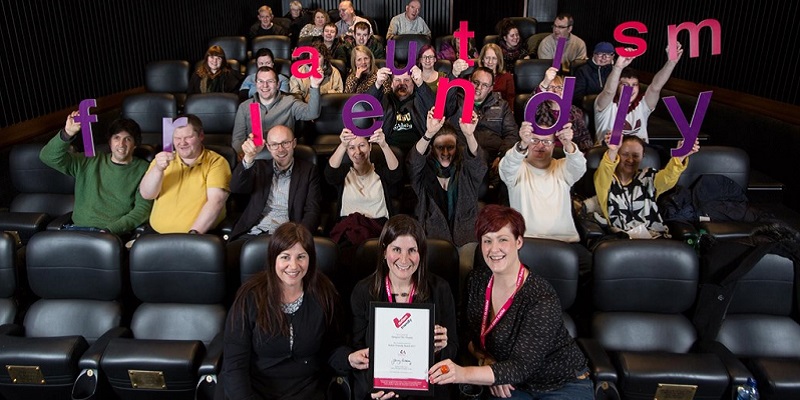5 ways to make cinemas more accessible

Art houses, independent cinemas, massive multi-screen theatres…they can all be found on Euan’s Guide! No two cinemas are the same when it comes to disabled access, and reviewers on Euan’s Guide have shared what they’ve loved, and what they’ve found tricky, when it comes to accessing cinemas big and small everywhere. Here’s what the best cinemas are doing to make access easier for everyone:
1. Make it easy to book and collect tickets
An accessible booking system is a must if you want disabled people to consider seeing a film at your cinema. It’s no use asking people to buy tickets to your screenings if you don’t offer various ways to do this. Not everyone uses a computer, and not everyone can use a phone. It’s important to let people choose whether they book their tickets online or using by talking to someone directly.
Don’t forget to make your ticket collection machines accessible too! This means ensuring that there is plenty of room around them, and if possible, a ticket machine that can be easily accessed from a seated position. If you can’t have this, then always have a member of staff on hand to assist.
“The foyer is huge and open so really easy to move around in a wheelchair. There are ticket machines to collect pre-ordered tickets, one of which is set at a wheelchair user’s level.” Review of Odeon, Fort Kinnaird.
2. Make all areas easy to access

The cinema experience is not just about the movie, but about the snacks and the atmosphere too! Cafes, seating areas and toilets should all be wheelchair accessible so that visitors can fully enjoy their time at your cinema. Try to keep foyers and queuing areas clutter free so that people have room to move around easily.
Read next: What makes a good accessible toilet? and Make navigation around your venue easier.
3. Encourage staff to be confident and welcoming
Every cinema is different, and staff are essential to helping visitors find their way around. Make sure all staff members know where the lifts, accessible toilets and step-free routes are. They should also be confident at using foldable ramps and hearing loops if you have these. One reviewer had an excellent experience at Picturehouse Central in London because staff had been so helpful:
“The staff are always exceptionally helpful and friendly both in the café and cinema. They are proactive in offering and pointing out where the lifts are. On my first visit after becoming disabled I phoned in advance, they reserved me a seat and someone escorted me to and from the screen. Another time I arrived early and a staff member went and got me a chair to sit on while I waited. I can go there and feel confident that the staff will assist me if I need it.” Review of Picturehouse Central.
Read next: Do your staff have disability awareness?
4. Schedule a diverse range of screening types

The more diverse your screenings are, the more appealing your cinema will be! Include as many Audio Described, Captioned, BSL-interpreted and Relaxed film screenings as possible, and don’t forget to advertise these in your programmes and online. Saffron Screen impressed one visitor who attended an autism-friendly screening with their son:
“I visited Saffron Screen for an autism-friendly screening with my ASD son. The staff were very helpful, we used the Social Story provided to prepare for our visit, and the provisions for the screening were very welcome (low lighting throughout, lower volume). A really lovely, welcoming and inclusive afternoon out!” Review of Saffron Screen.
Read next: Top tips for marketing assisted events.
5. Give as much seating choice as possible
When it comes to watching the movie, good sound (enhanced by great hearing loops), and a clear view of the screen are essential! Wheelchair users are often restricted in their choice of where to sit, and this can mean watching a film with a sore neck at the front of the cinema every time. If you can spread your wheelchair accessible seating areas across different sections of your movie theatre, this will give wheelchair users and their friends and families more options to suit them. Premiere Cinemas in Cardiff got this right according to one reviewer who loved sitting in the back row!
“Best of all, the cinemas are entered from the back, so the wheelchair spaces are in the back row meaning you aren’t bending your neck looking up at the screen.” Review of Premiere Cinemas, Cardiff.
You might also enjoy:
An independent cinema with a difference
What makes a theatre accessible?
Top tips for marketing assisted events


 Follow Euan's Guide on Instagram
Follow Euan's Guide on Instagram
 Follow Euan's Guide on LinkedIn
Follow Euan's Guide on LinkedIn
 Follow Euan's Guide on Facebook
Follow Euan's Guide on Facebook


Comments
You have to be signed in to leave a comment.
Login / Signup